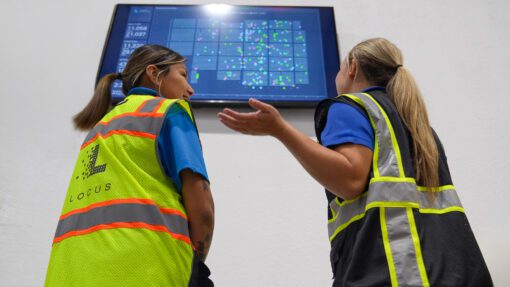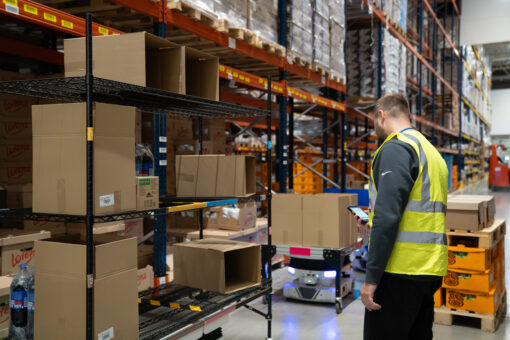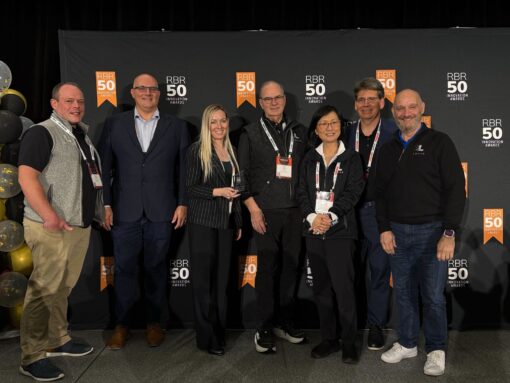WP: How to achieve 400 UPH with Locus Fast Pick
WP: How to achieve 400 UPH with Locus Fast Pick Download Now!
How Retail Warehouses Use Automation to Stay Competitive
Mary Hart, Sr. Content Marketing Manager

Retail warehouses are under constant pressure to operate faster, smarter, and more cost-effectively and Barbara Porter, Chief Operating Officer of Fragrance.com, has witnessed firsthand how automation transforms warehouse operations, enhances employee experience, and meets rising consumer expectations.
In a recent episode of “Warehouse Automation Matters,” we discussed the impact of technology, including artificial intelligence and robotics, on retail warehouse efficiency and how companies can use automation to improve their performance and bottom line.
AI and Robotics in Retail Warehouses
AI and machine learning continue to shape the future of warehouse automation. Porter noted that AI was the big buzzword in 2023 and 2024, and its role in data-driven decision-making is only growing. “Companies that adopt it and adopt it well are going to do well as a result,” she explained.
Fragrance.com has successfully integrated robotics with AI technology into its warehouse operations over the past 18 months with the primary goal being to remove low-value, labor-intensive tasks from human workers' plates. When the company was considering automation, Porter asked, “Do we need a human to move goods from point A to point B, or can we use a robot?”
Employee Benefits: A Surprising Win for Automation
One of the most notable takeaways from Fragrance.com’s automation journey is the positive impact on employees. “I’ve actually had employees come and thank me for bringing in automation because their jobs are more interesting now,” Porter shared. “It’s not as physically demanding as it was in the past.”
Despite concerns that automation replaces human workers, Porter sees it differently. “It’s about looking at where humans can add value and automating the tasks where they don’t,” she said. She likens the transition to when Microsoft Excel first became widespread: “It didn’t eliminate accountants; it made their jobs easier and allowed them to perform at a higher level.”
One unexpected outcome? Robots have improved overall warehouse efficiency by setting a steady work pace for employees. “The robots move at a constant pace, and our employees have naturally started moving at that same pace,” Porter observed. “It’s become their normal, and they’re okay with it.”
Rather than eliminating jobs, automation at Fragrance.com has led to role shifts, creating new opportunities. “There are still plenty of value-added activities that humans need to do in our warehouse but looking at the ones where it doesn’t have to be a human is one place that we focused on,” said Porter.” There are new roles for maintenance people, mechanics, and people who are trained to wrangle the robots.”
Meeting Customer Expectations with Speed and Accuracy
Retail consumers now expect rapid delivery, largely due to the high standards set by e-commerce giants. “Same- or next-day delivery has set the bar very high,” Porter stated. “The more we can do to meet that expectation, the better we do as a company.”
For Fragrance.com and other warehouses, automation plays a crucial role in this effort and tools like computer vision enhance quality control, ensuring that the right items are packed and shipped with precision. “Quality is not negotiable,” Porter emphasized. “If you break that bottle or mishandle it before it gets to the customer, that’s a bad customer experience.”
Handling Peak Season with Scalability
Peak season is a major challenge for any retailer, but for Fragrance.com, it is particularly intense. “We do 40% of our business for the entire year between Thanksgiving and Christmas,” Porter explained.
Previously, managing seasonal demand meant hiring hundreds of temporary workers, an approach that came with high training costs and inefficiencies. Now, Fragrance.com utilizes a flexible robotic workforce. “In addition to our core fleet of robots that are with us year-round, we bring in a set of peak bots from early November to early January,” Porter said. These seasonal robots allow Fragrance.com to scale up operations without the complexity of onboarding temporary human labor.
Training times for new employees have also decreased significantly. “If you've ever done self-checkout at a store, you can handle working with these robots,” Porter said. “Training now takes five to ten minutes instead of an hour or more.”
Choosing the Right Retail Warehouse Automation Solution
Porter’s advice for companies looking to automate? “Do your homework. Not every solution will work for your business.” Fragrance.com’s B2C model, with its 40,000 SKUs, required a flexible, scalable solution. “Some of the bigger solutions out there cost seven or eight figures to implement, and the break-even period was going to be five to seven years. The solution we chose had a fraction of that break-even time,” she explained.
Visiting warehouses that had already implemented automation helped Fragrance.com make an informed decision. “Talking to employees, talking to managers, and seeing solutions in action was invaluable,” Porter noted.
Listen to the Full Conversation
Automation is reshaping warehouse operations, improving efficiency, and enhancing the employee experience. But the journey requires careful planning, the right technology, and a willingness to adapt.
To hear more insights from Barbara Porter, including how Fragrance.com is using AI, robotics, and strategic automation to stay competitive, listen to the full episode of Warehouse Automation Matters.




